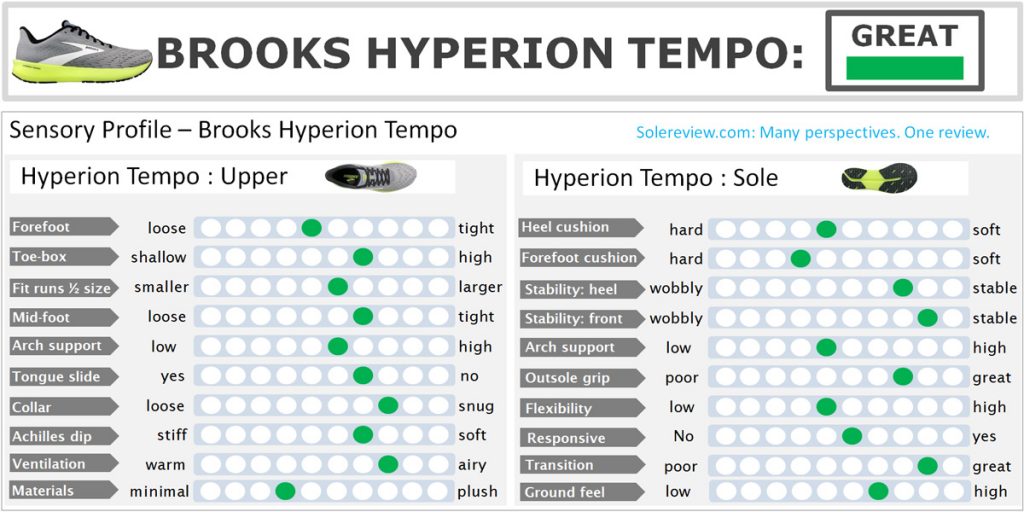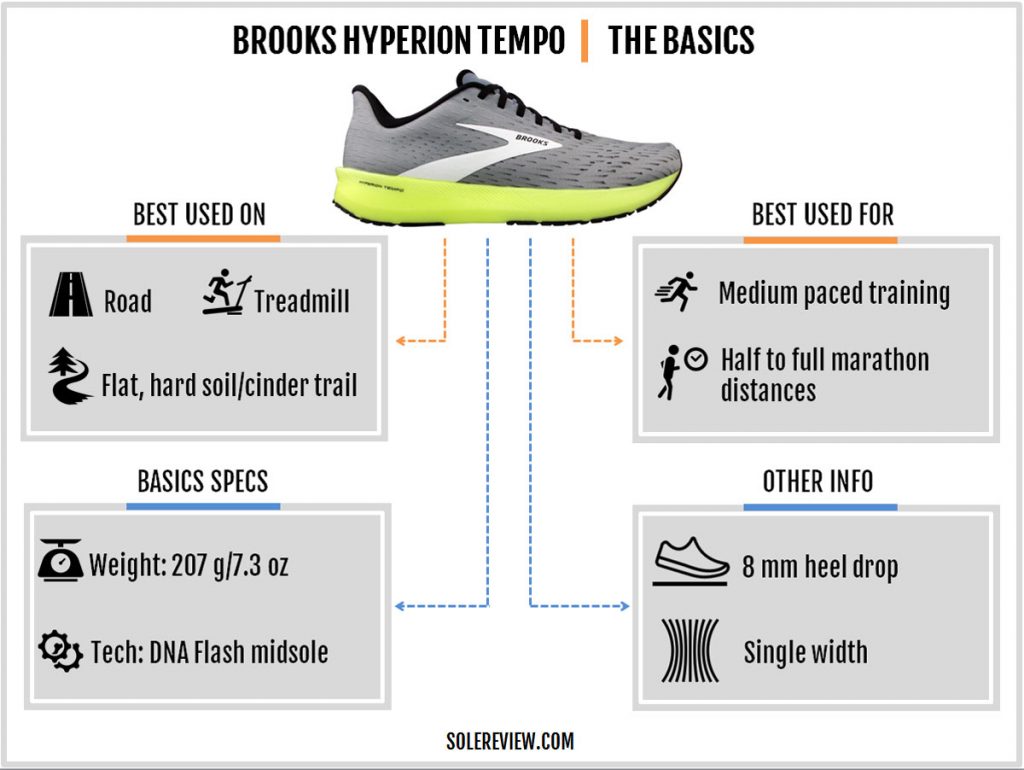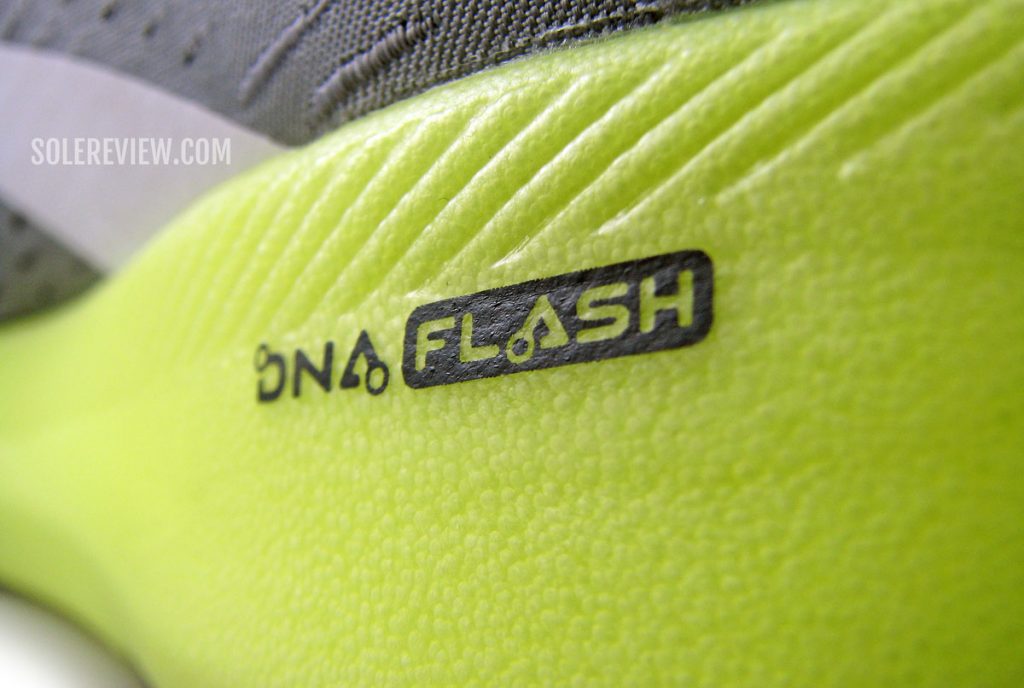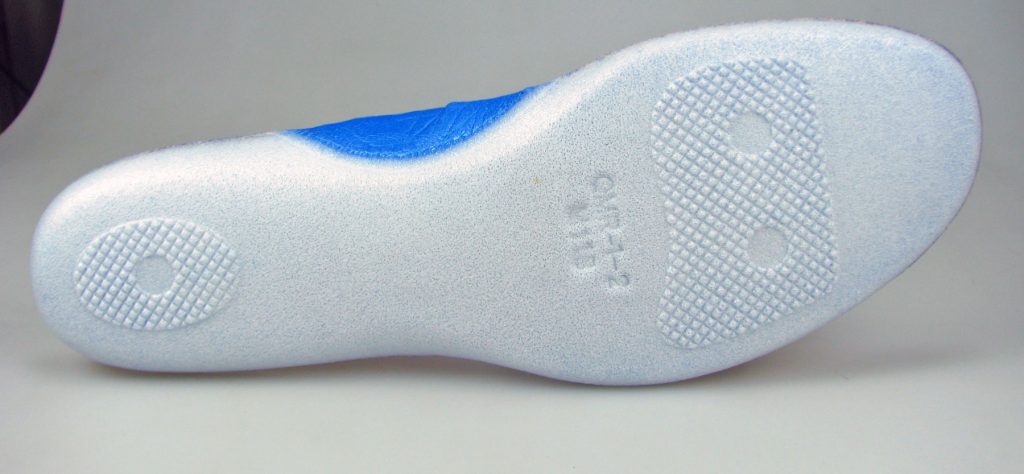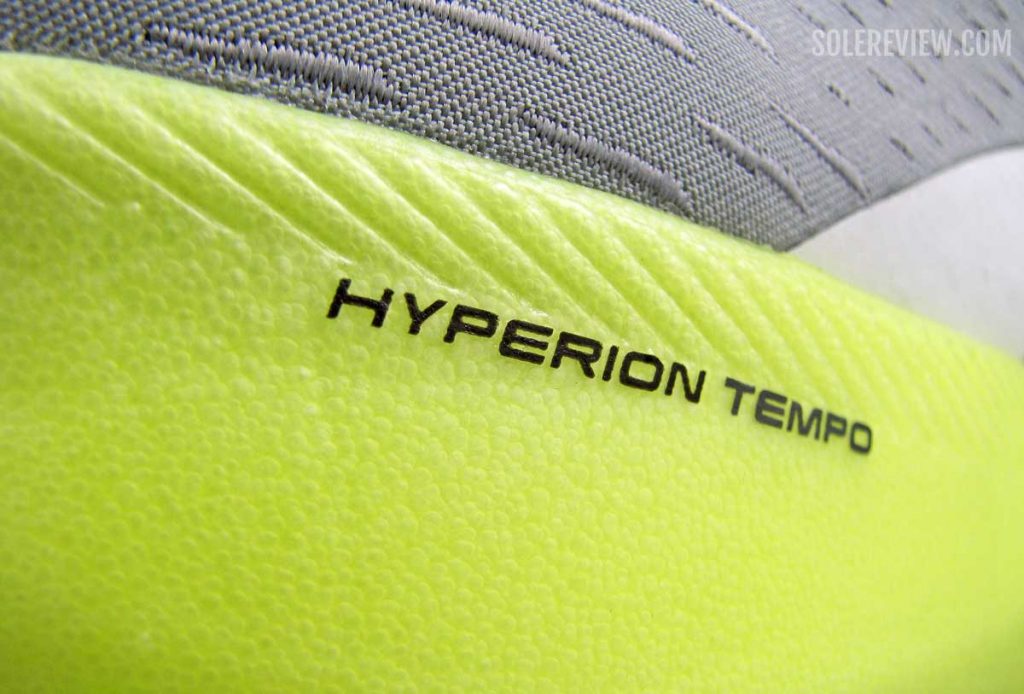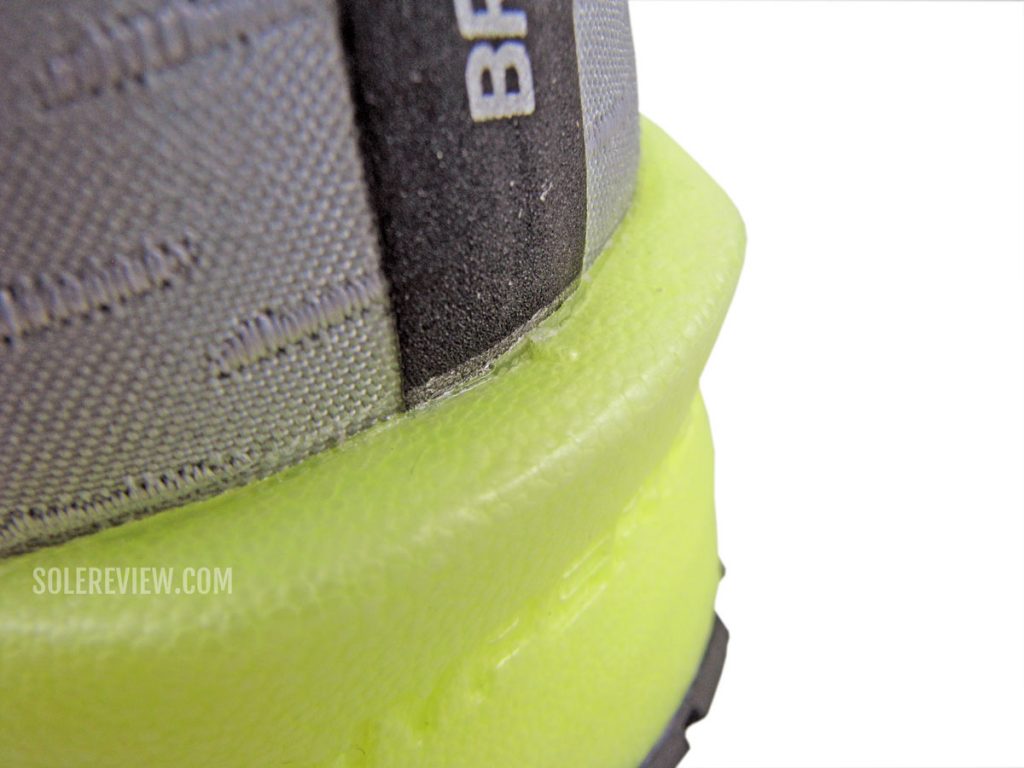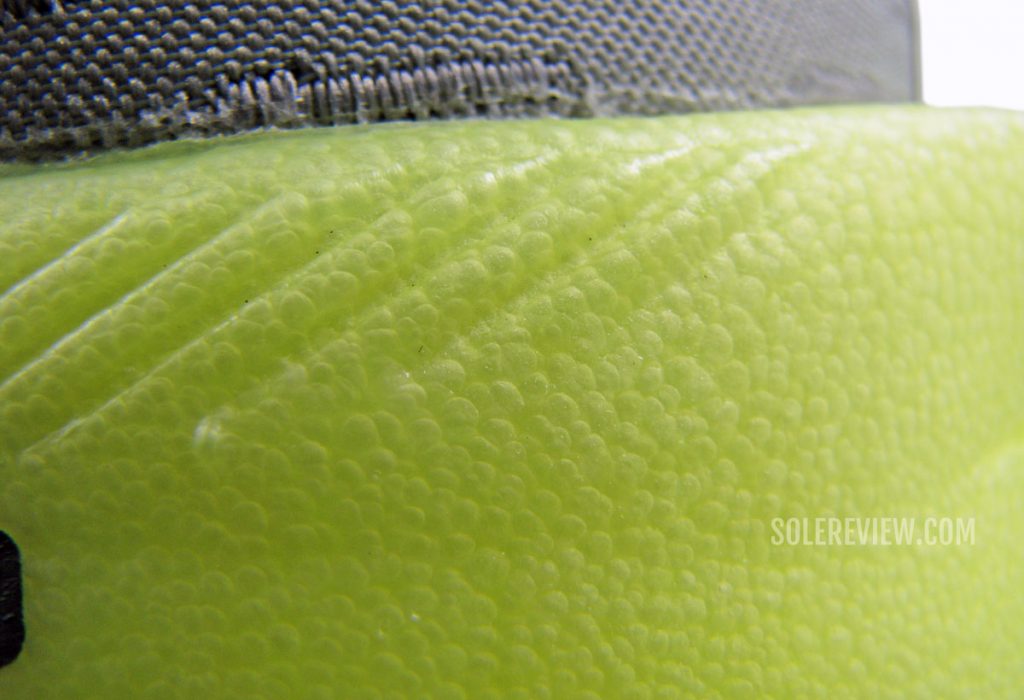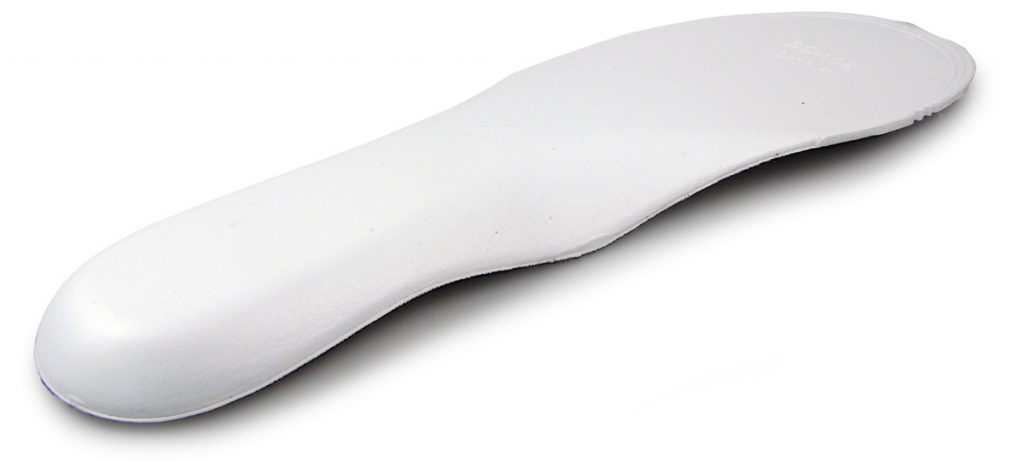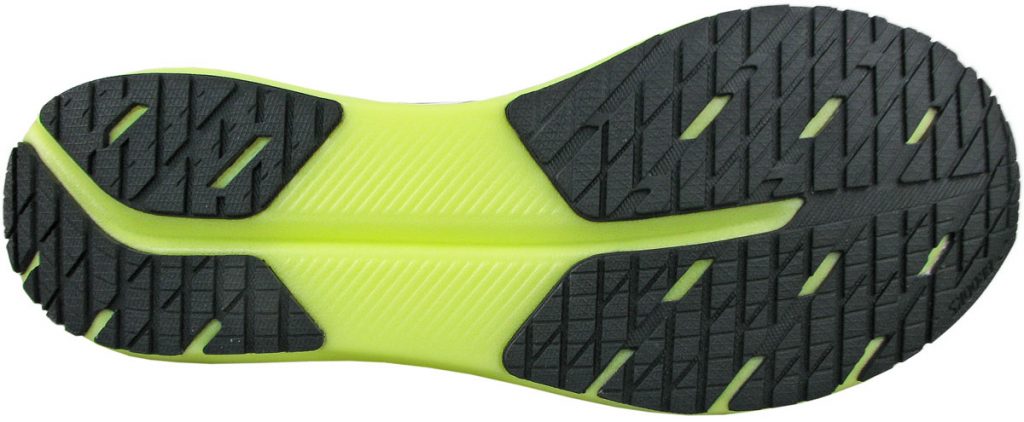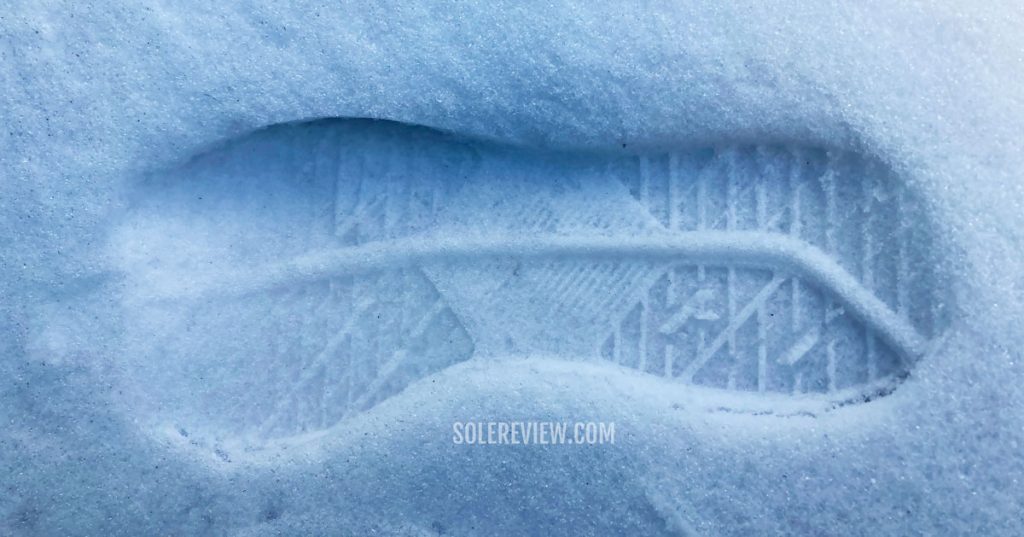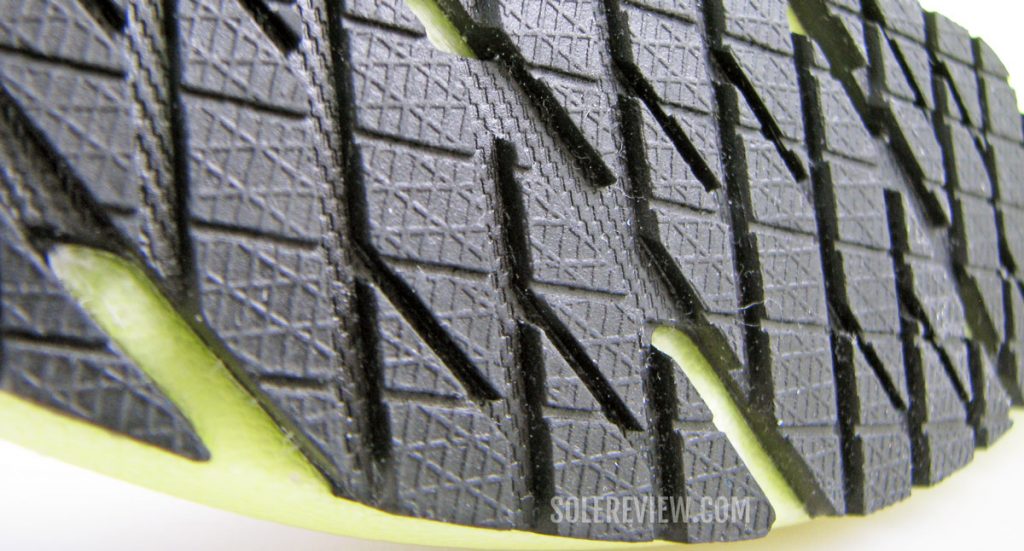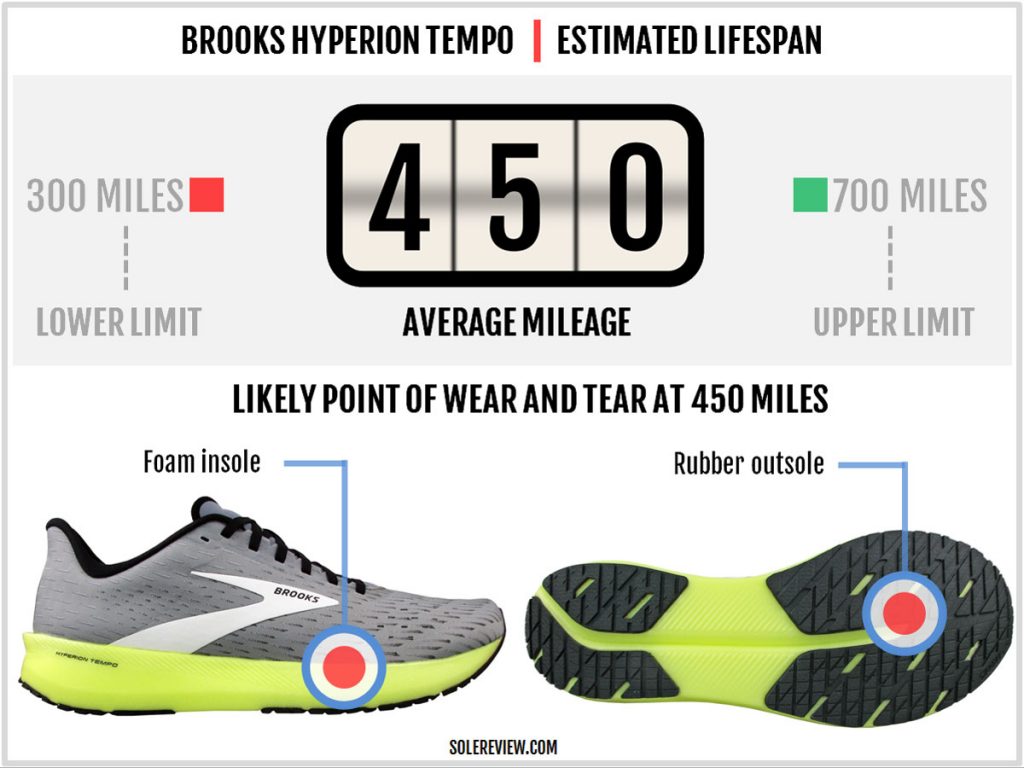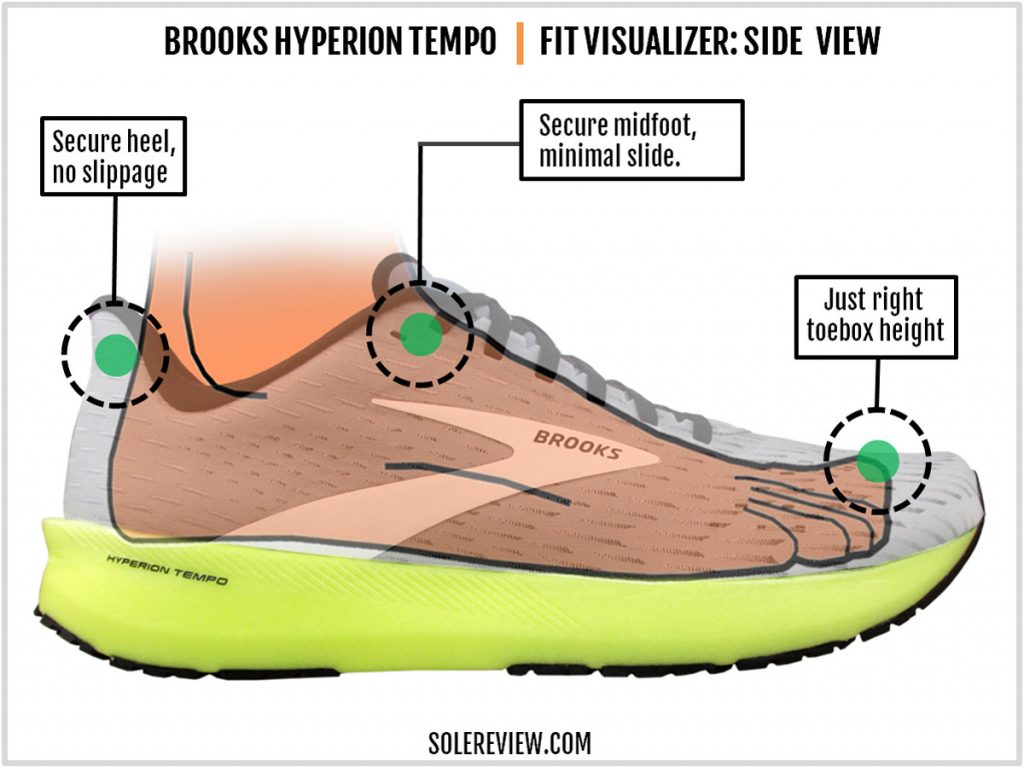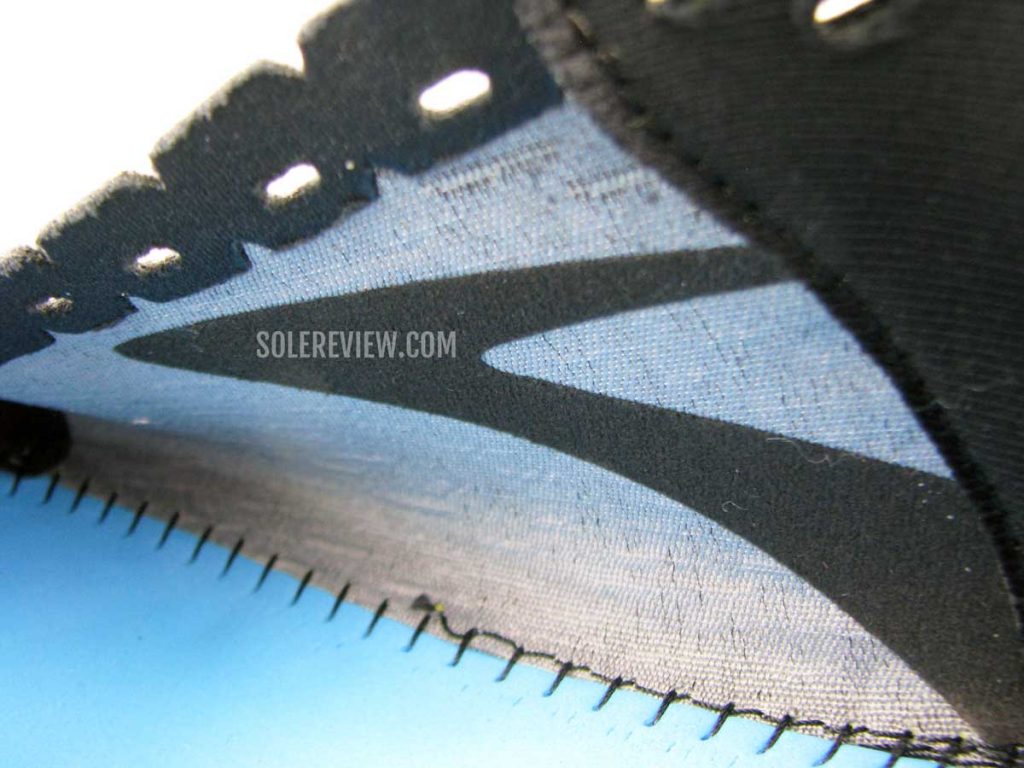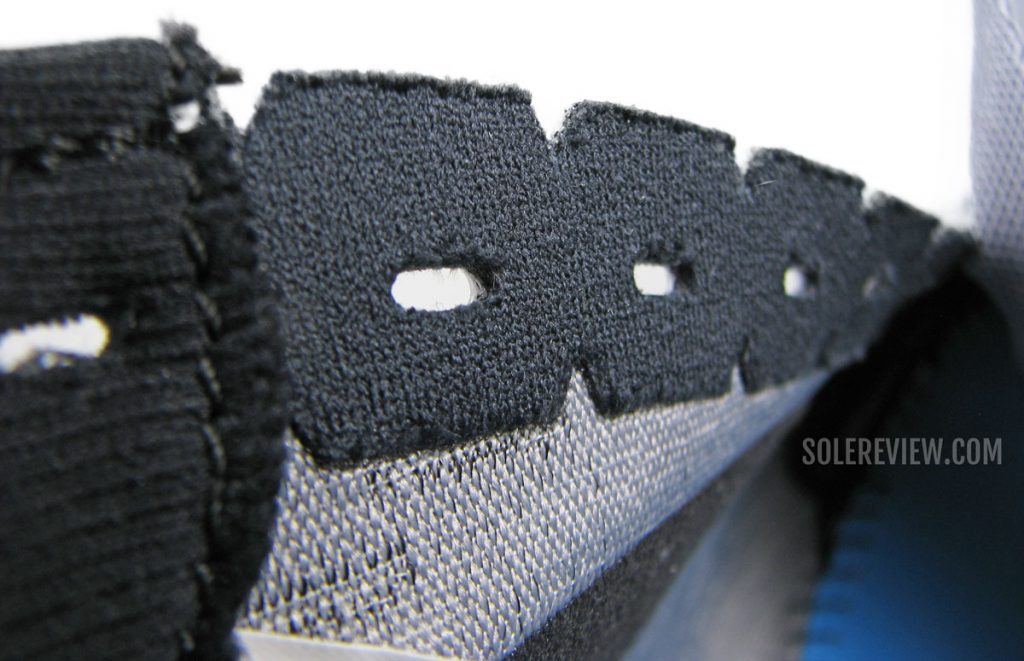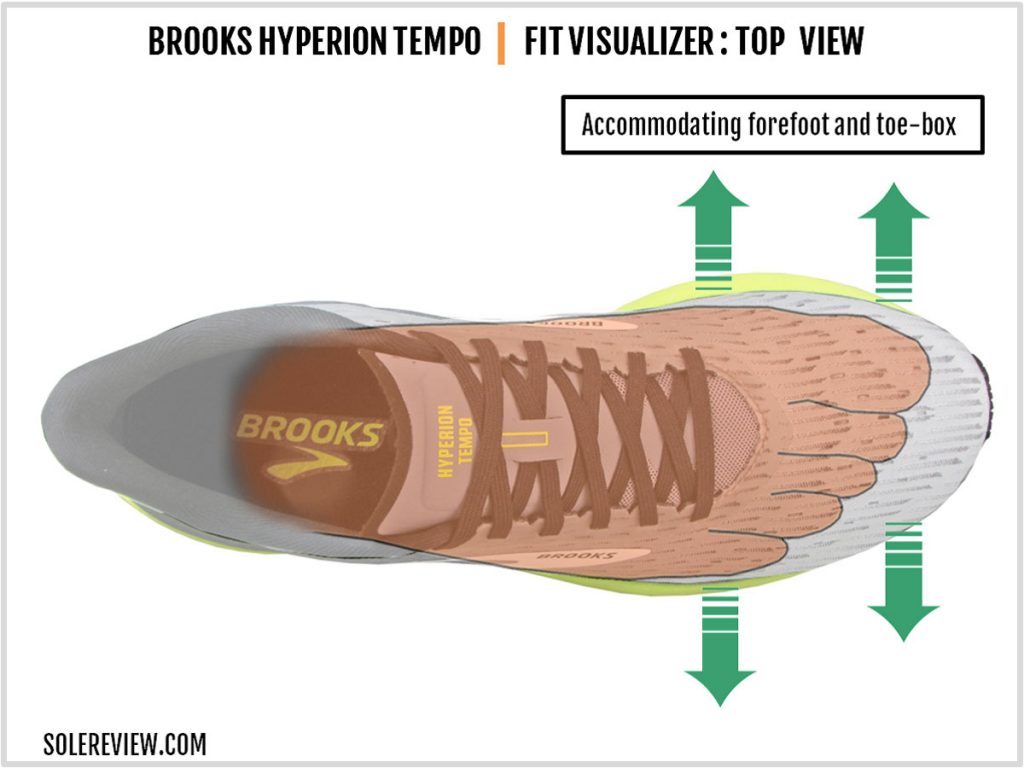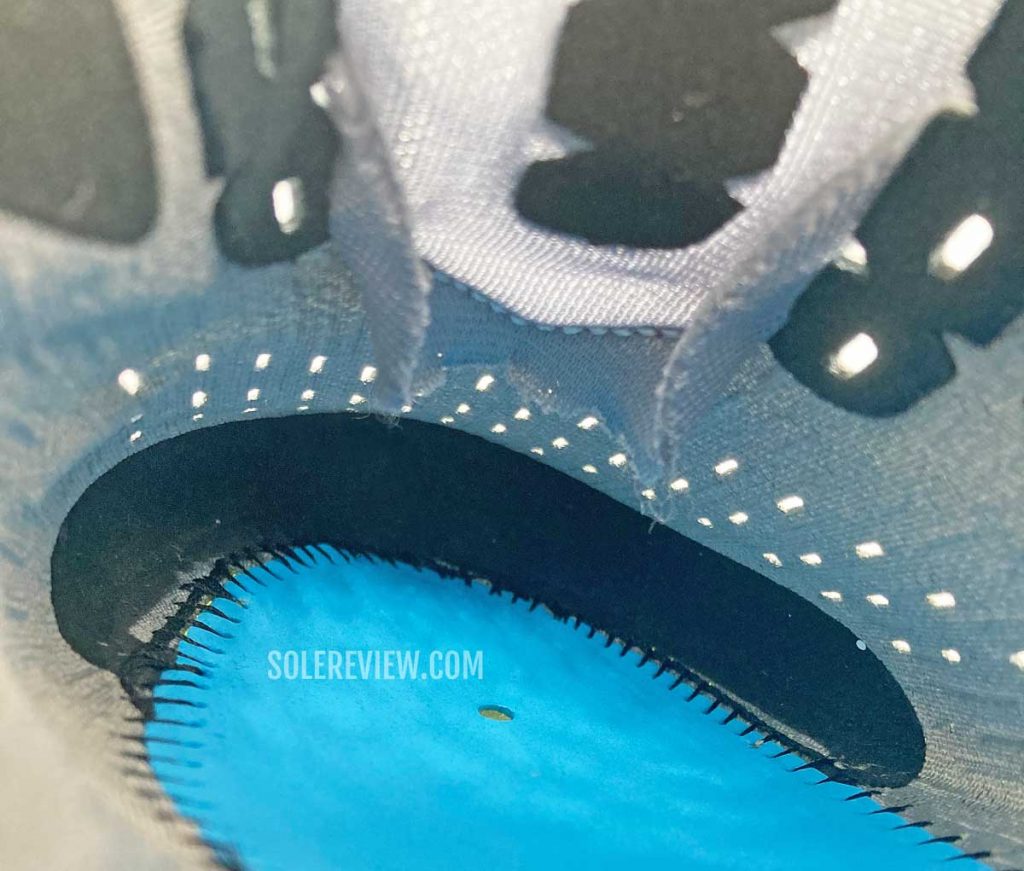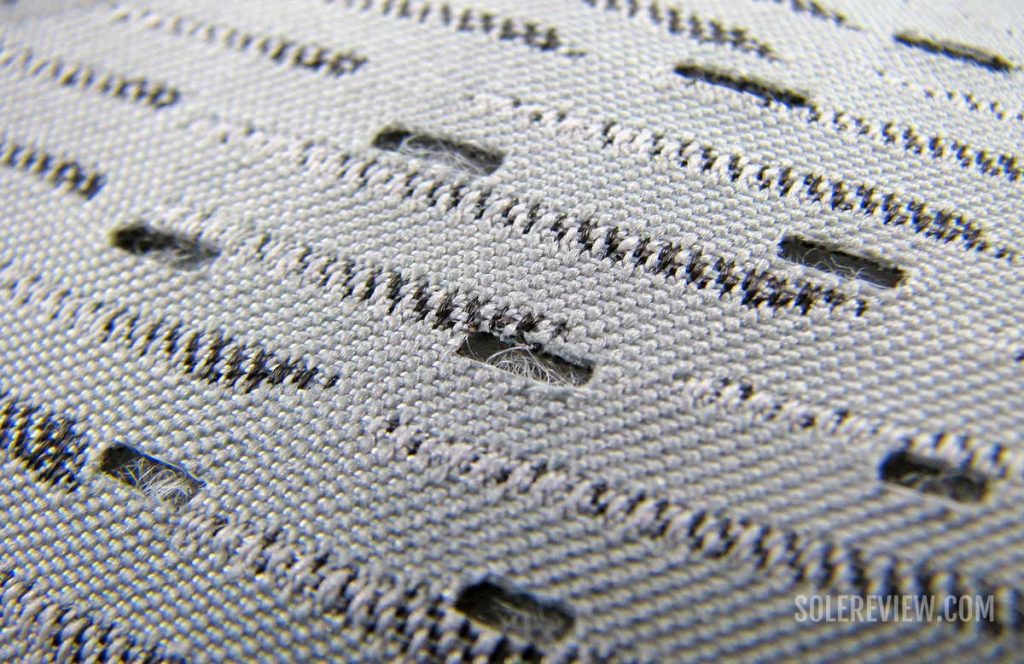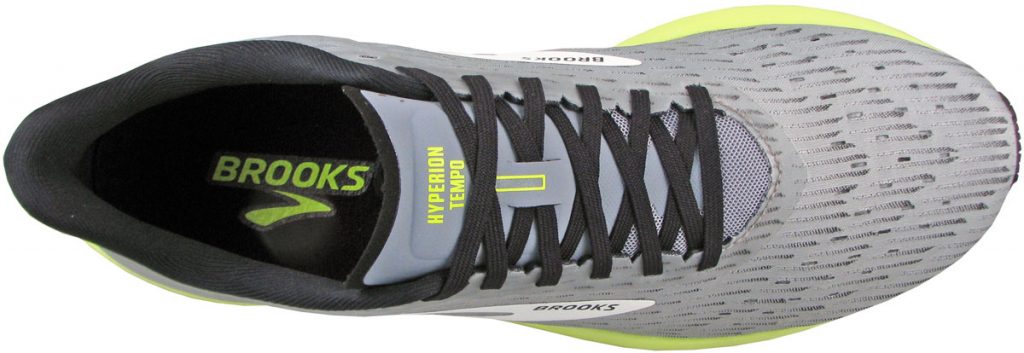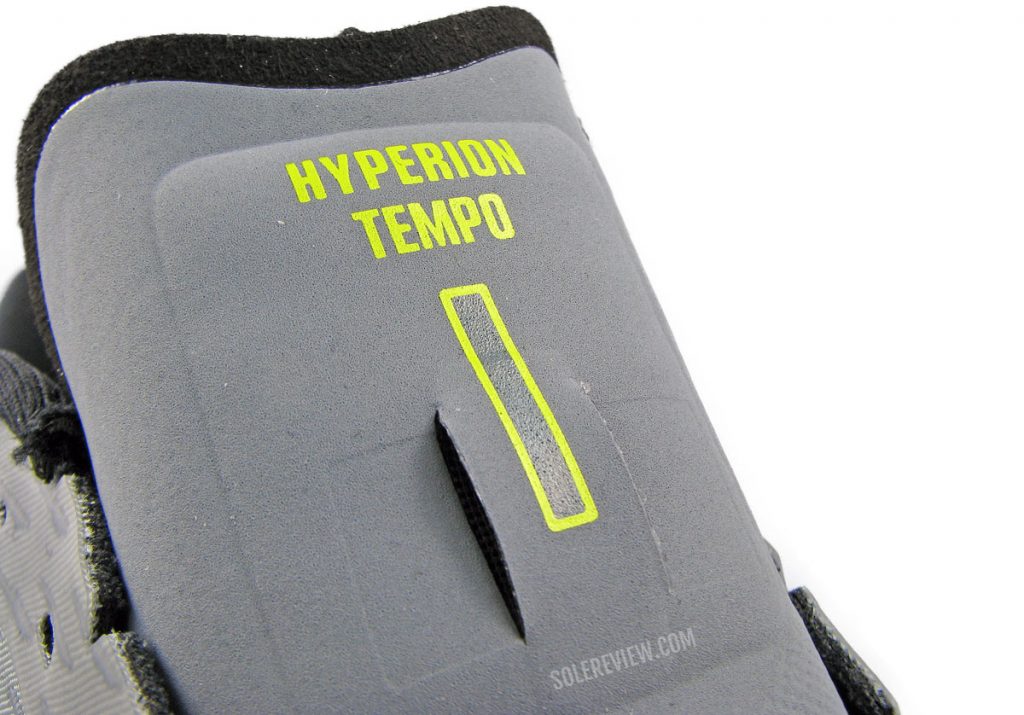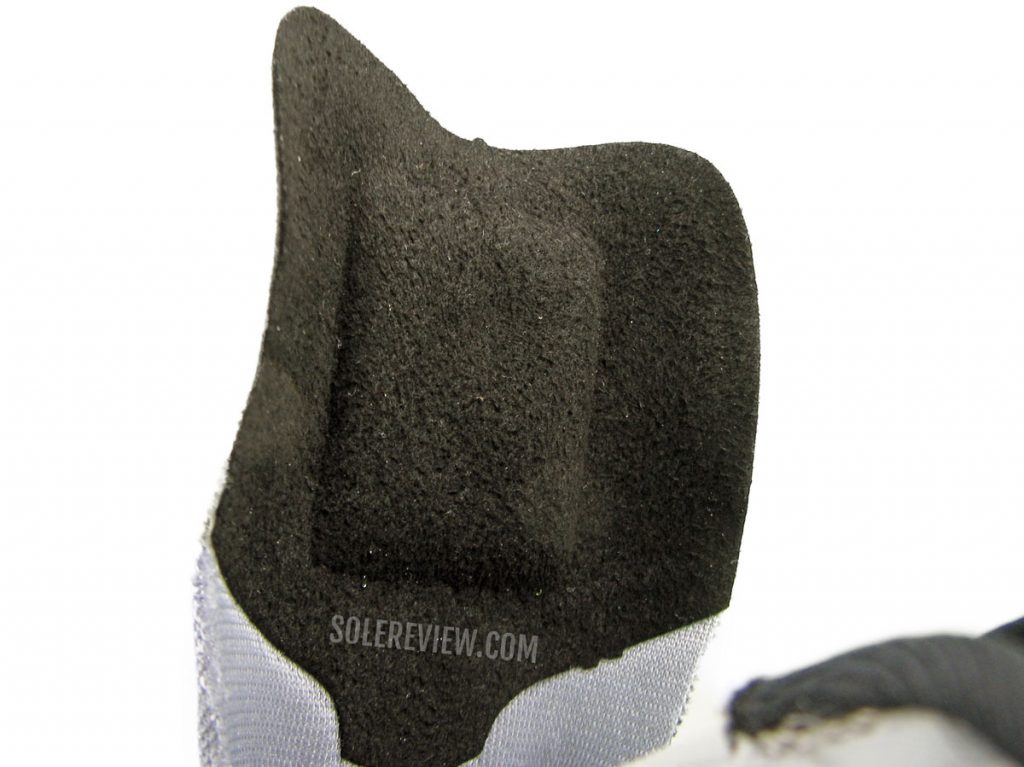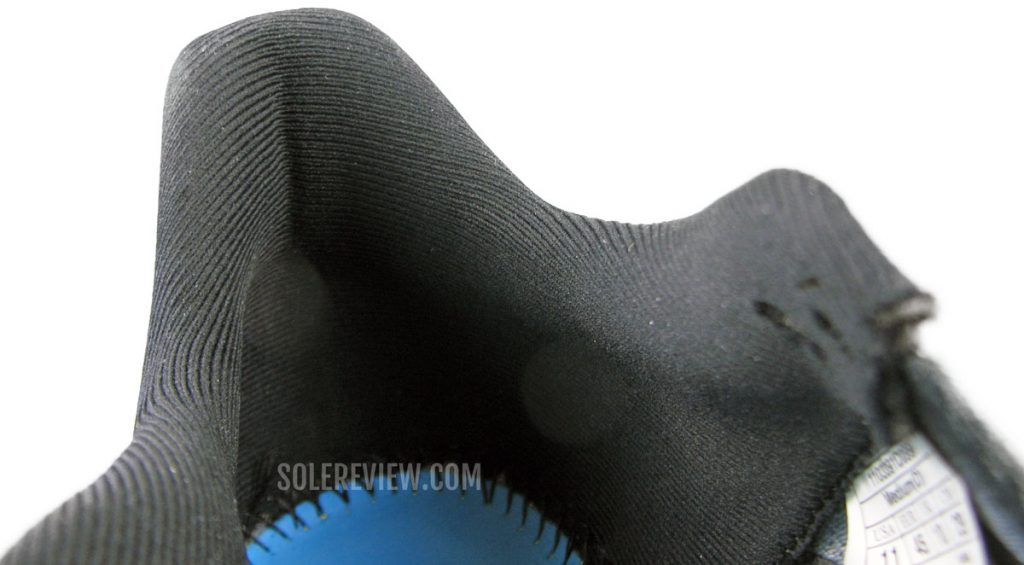INTRODUCTION
Note: The introduction contains a 1,000+ word digression on recent midsole manufacturing advancements. Feel free to skip to the ‘ride experience’ section.
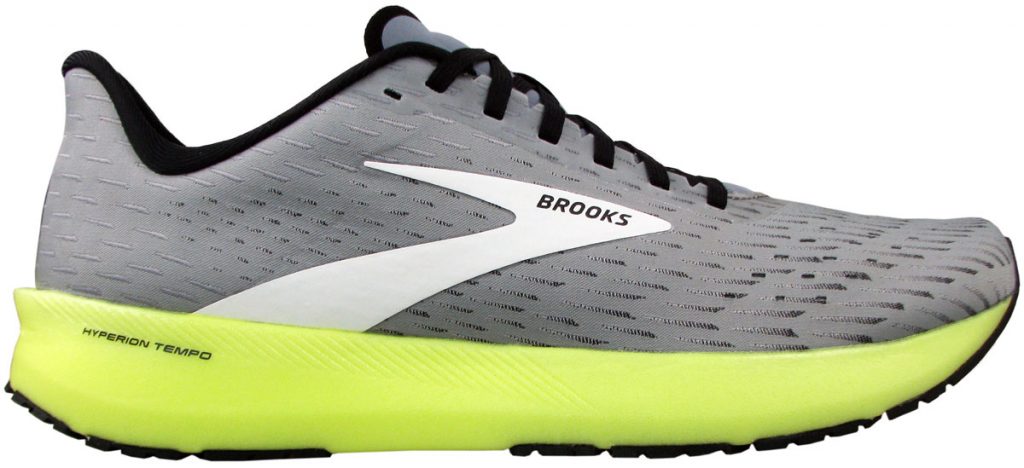
What a lovely shoe, the Brooks Hyperion Tempo.
It’s severely underrated, and we’re surprised why this shoe hasn’t received the love that the Skechers Razor has. The Hyperion is a near-perfect blend of ground feel, cushioning protection, and ride economy.
It’s also very lightweight, durable, supportive, and has an outsole that grips exceptionally well.
The upper is roomy, smooth-fitting, and breathes well during summers while being insulated enough for mild winter conditions. These are all hallmarks of an ideal multi-season running shoe.
We’d go as far as to say that this is the best shoe in Brooks’s line-up. The Hyper-T is also one of the best running shoes on the market today, even when compared to its peers. We recently got rid of the numeric rating in our reviews, but if Solereview had to award a score, 95% seems just about right.
It isn’t to be confused with the Hyperion racer – this is a more cushioned shoe, a lighter trainer that goes the distance in comfort and speed. And the Hyperion Elite 2 is another shoe entirely, thanks to its plate-infused midsole and $250 retail.
It’s also hard to discuss this shoe without mentioning Skechers. After all, isn’t Brooks’ cushioning tech vaguely inspired by the Skechers’ Hyperburst foam?
But is it really? And does it even matter?
Though Brooks’ ‘DNA Flash’ is loosely inspired by the Skechers Hyperburst, the latter isn’t an original idea either.
Nike was the first brand to use this construction technique for one of those insoles. We know this because we reviewed a Nike running shoe in 2008 – the Vomero 3, to be precise.
Between 2006 and 2008, most high-end Nike running shoes (called the Bowerman series) came fitted with a ‘Fitsole’ – an insole that used carbonated EVA foam as a base. The insoles weren’t perfect and were prone to biting the arch, so Nike dropped it.
Nike’s loss, Skechers’ gain. The Hyperburst midsole received rave reviews due to its extremely lightweight and resilient ride quality.
The Brooks Hyperion Tempo has a similar cushioning delivery. The 7.3-ounce build, when combined with the distance and pace-friendly ride quality, makes the Hyper-T an ideal shoe for most workouts. It packs sufficient comfort for longer miles while being versatile enough for fast or relaxed runs.
However, unlike the Skechers Razor, the Hyperion has plenty of room inside a comfortable and thoughtfully-designed upper.
But before getting into the deep end of things, what are the Skechers Hyperburst and Brooks DNA Flash made of?
You must have come across terms such as ‘carbonated EVA’ or ‘EVA mixed with supercritical CO2’ used to describe this foam. Dumb this down, and it simply means that EVA is blended with fluid (and pressurized) Carbon Dioxide during the manufacturing process. And just how does this work?
Though Dry ice (frozen CO2) is often found in supermarkets, we probably walk past a canister of supercritical Carbon dioxide every day without even noticing it.
We’re talking about fire extinguishers that contain pressurized – or supercritical – CO2. It’s important to highlight the difference between supercritical and liquid. Both are not the same; a supercritical state combines the best of two states – it has the viscosity of gas and density of a liquid.
Though supercritical Carbon Dioxide or Nitrogen may appear liquid, it lacks the surface tension of the latter. This fluid behaves and diffuses like a gas, thus making co-mingling with other compounds easier.
Traditionally, running shoe midsoles are made by introducing chemical ‘blowing’ agents into EVA blends. During the molding process, these chemicals release air bubbles, which goes on to form millions of air pockets inside the foam.
The trapped air pockets are what give any midsole its cushioning softness, responsiveness, and a combination of both.
A simple analogy would be bread-making. What do you think the yeast does? Yes, that’s right – the yeast creates a colony of air bubbles inside the dough to make the bread fluffy and fun to consume.
The Skechers Hyperburst and Brooks DNA Flash are both similar in the way that they do not use conventional blowing agents. They use CO2 and N2 (or a blend thereof) which results in a greater bubbling reaction.
In other words, both the midsoles types start with a smaller block of EVA foam than traditional midsoles. So the finished midsole contains more air and less EVA foam. It’s no wonder that running shoes that use these midsoles weigh between 6 and 7-ounces, the Hyperion included.
We’re a bit surprised that Brooks and Skechers didn’t take the opportunity to market the sustainability aspect of this cushioning tech. Nitrogen and CO2 are far less toxic than chemical blowing agents, and leave no residue after reverting to their gas state. After all, the air we breathe is 78% Nitrogen.
The Brooks DNA Flash and Skechers Hyperburst differ slightly due to the choice of solvents used. Skechers supposedly uses a blend of supercritical CO2-N2, with CO2 being the dominant part. For Brooks, it’s the other way around, with more Nitrogen.
This also explains why the Hyperburst and DNA Flash have different ride behaviors. The Skechers foam is relatively softer than the Hyperion’s midsole, and that’s because using CO2 as a blowing agent results in larger – and irregularly shaped – air pockets.
In contrast, DNA Flash has a denser and uniform structure with smaller bubbles trapped inside. What follows is a lower level of softness due to the higher density. Don’t take our word for it; if you are fortunate enough to own both, compare the visual texture of both the midsoles for the observable difference.
By the way, Brooks isn’t the first brand to use Nitrogen-infused foams. That distinction goes to New Balance for its N2 inserts.
THE RIDE EXPERIENCE
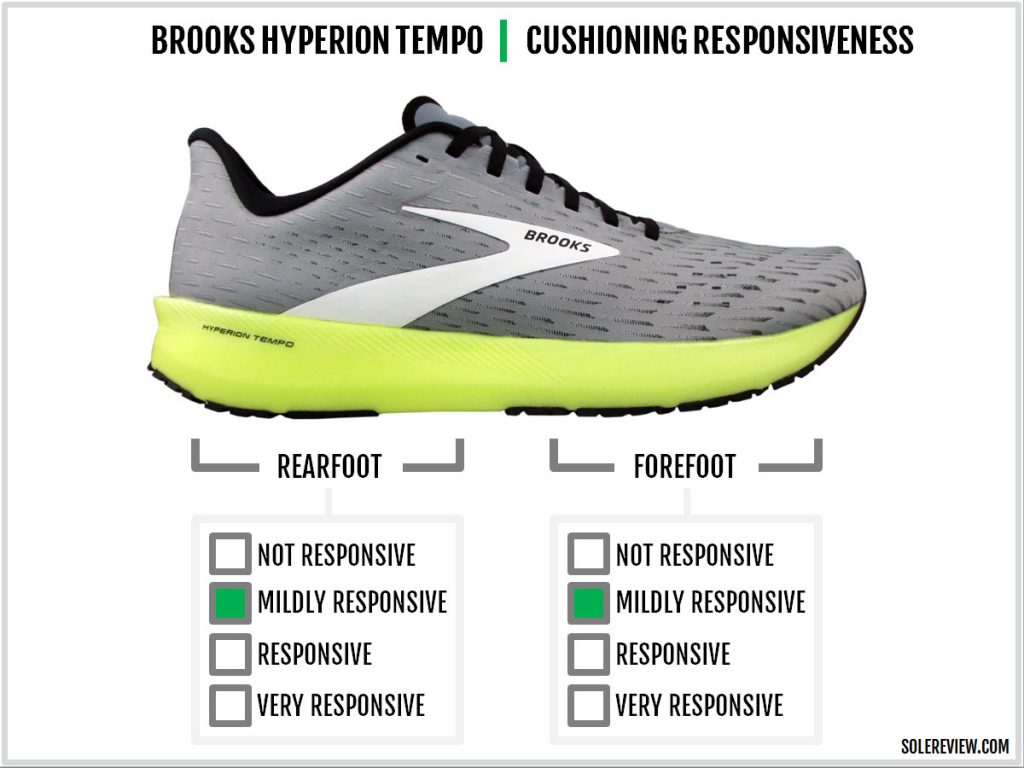
Though Brooks throws around the term ‘energy return’ liberally in its marketing, the DNA Flash has very little of that. The foam isn’t noticeably ‘springy’ or ‘bouncy’.
On the other hand, if we interpret ‘Energy return’ as ground feel, then yes, the Hyperion’s firm ride has plenty of that.
The Hyper-T has just enough cushioning to make distance runs comfortable; nothing more, nothing less. And it’s not very soft either. At room temperature, the midsole feels firm, dense, compact – you get the idea. This is nothing like Asics Flytefoam Blast, Nike ZoomX, adidas Boost, or the Saucony Pwrrun+ and PB.
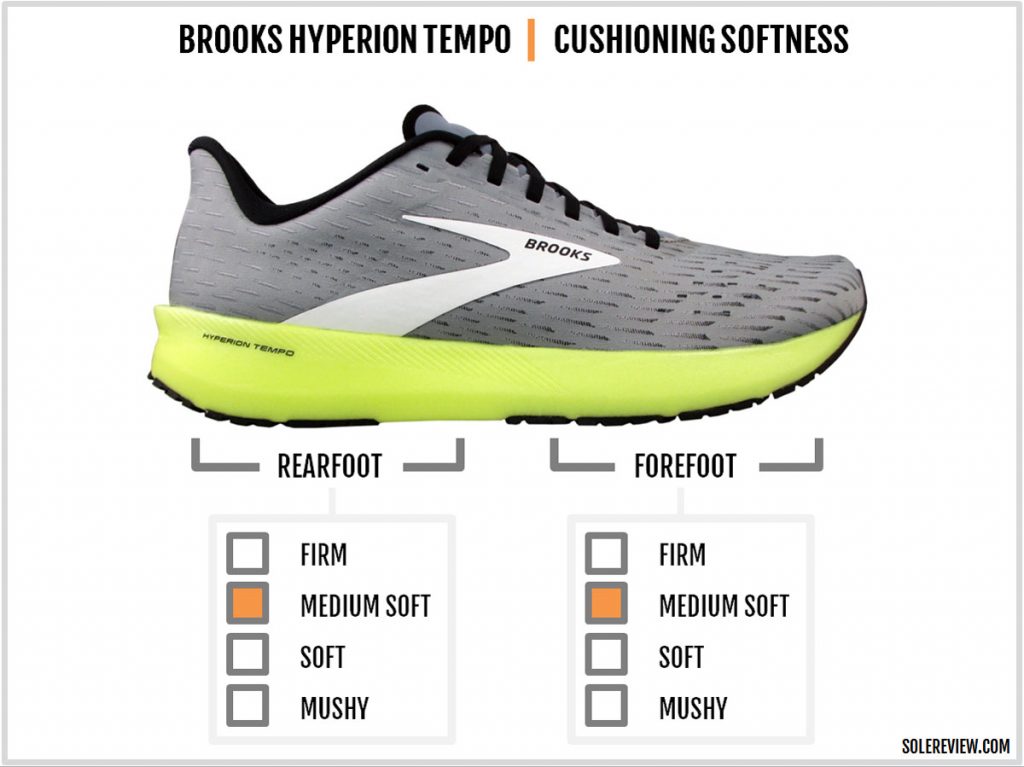
During winters, a noticeable hardening of the midsole takes place. It’s understandable, considering the shoe uses an EVA foam base.
There’s not a lot of step-in softness either. The thin insole is a good fit for the pace-efficient midsole, as the foot doesn’t have to go through layers of squishiness during the gait cycle.
At a conceptual level, the Hyper-T represents the same category that the previous generation Brooks Launch belonged to. Though the new Launch 8 is a softer shoe, the earlier Launch(s) were firm yet padded running shoes suitable for higher-paced runs.
The Hyperion is like the Launch 6 or 7, except that’s 2-ounces lighter, $50 more expensive, and better long-term durability.
And believe it or not, the Hyperion Tempo is a lot more fun than what the paper specs suggest.
The first thing that strikes you is the absolute lack of weight.
At a sliver over 7-ounces, this running shoe is as lightweight as it gets. For example, we’re simultaneously testing the Asics Kayano Lite (among several others) for our upcoming review. From a weight point of view, it’s incredible how much a 3-ounce difference can make to the ride experience.
Historically, a 7-ounce build was the exclusive domain of racing flats. That has changed very quickly over the last few years, and today we have a vast range of featherweight shoes with different personalities. On the softer and cushioned end, we have shoes like the Nike Vaporfly. Even racing flats are getting lighter, as evidenced by the Reebok Run Fast Pro.
Somewhere in between lies the Brooks Hyperion Tempo, and that’s what makes it appealing.
It’s a shoe without compromises; the 8 mm offset midsole with its hi-tech Nitrogen innards is cushioned and nimble enough for the long haul.
The same Nitrogen magic makes the foam dense and firm, a combination that not only makes faster runs (7 min/mile, 4:30 min/km, and up) enjoyable but also provides the safety net of ride stability. It doesn’t shear sideways either.
The Hyperion Tempo is a neutral running shoe, so it behaves like one. But it’s one of the neutral-est shoes we’ve come across. Usually, most neutral running shoes have a groove on the outer midsole that gives the ride a bit of a lateral lean.
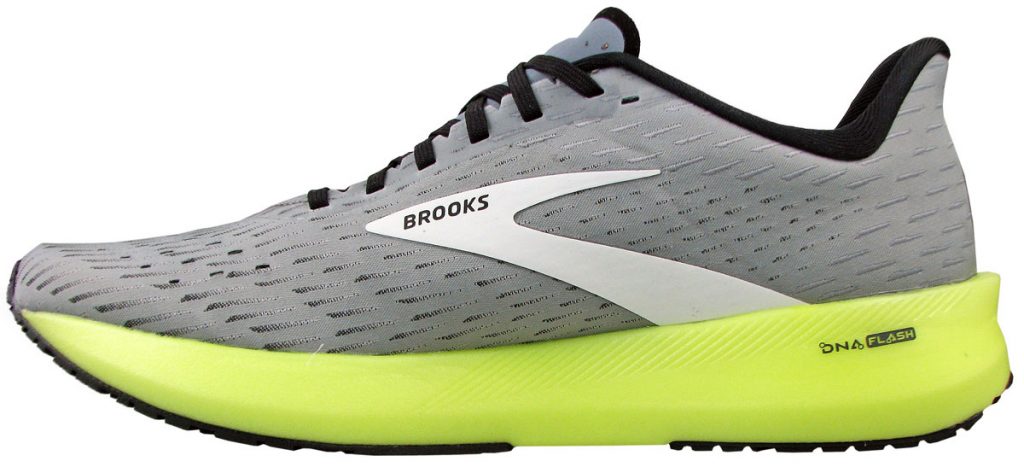
That generalization doesn’t apply to the Hyper-T. Here, both sides of the midsole are balanced. This unique geometry results in excellent stability and transition quality.
Runners who land rearfoot first will be in a position to take advantage of the heel bevel for smoother landings.
The midsole design, firmness, and outsole design benefit the transitions.
Nearly all of the forefoot and heel contact areas are covered with grippy rubber, and there’s a deep transition groove that runs down the center. Here’s an imprint of the said groove on packed snow:
Speaking of wintery conditions, the Hyperion’s outsole is very capable.
Naturally, as with any non-spiked outsole, caution needs to be used in abundance when running over slushy and snow-covered surfaces.
Else, there’s very little to complain about the traction quality of the Hyperion. The grip is great on dry and damp roads alike. The bite also helps improve the transition process as there’s very little wasted effort. The power delivery from the foot to the ground happens optimally, and that’s important during quick touch and go as well as when turning into fast corners.
Full contact landings are also made easier by the flat outsole geometry.
Despite the 8 mm heel-to-toe offset, the forefoot doesn’t punish landings or transitions. It’s worth bearing in mind that DNA Flash is a dense and resilient material, so its cushioning properties cannot be reduced to just its thickness.
Regardless of whether the run is a short and easy one (10 min/mile, 6 min/km or slower), or half-marathon distances, the Hyper-T makes short work of it.
The Brooks Hyperion Tempo is growing on us, and we’ll say this aloud, perhaps prematurely: this Brooks shoe feels like the modern-day interpretation of the adidas Supernova Glide Boost.
Desirable traits like being lightweight, cushioned, efficient, supportive, and durable – are condensed into a single shoe, thus making the Hyper Tempo an excellent buy.
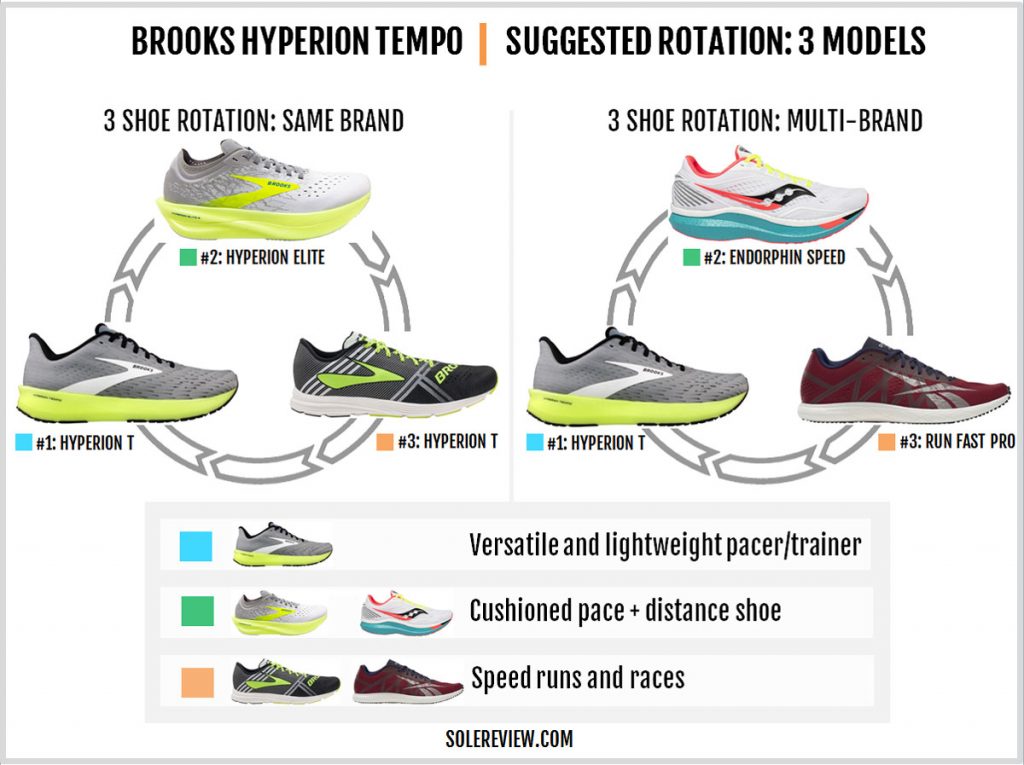
The Hyperion is versatile enough to make a same-brand (Brooks) rotation strategy redundant.
Hypothetically speaking, one could tap into the high and low spectrum of the Hyperion assortment, but what’s the point? The Hyperion Elite 2 gets you the plate + DNA Flash, whereas the Hyperion racer is an old-school flat. That said, you don’t need them when you have the Tempo.
Outside Brooks, there’s an opportunity to try something new. Say, shoes like the Nike Vaporfly Next % or the Saucony Endorphin Speed? The Reebok Run Fast Pro will satiate your racing flat fix.
If a trail shoe is needed as a part of the rotation, the Brooks Catamount makes a good case for itself. It’s got the same DNA Flash midsole foam as the Hyperion.
IS THE BROOKS HYPERION TEMPO DURABLE?
There used to be a time when Brooks running shoes weren’t known for being durable.
Those days are ancient history, and the Hyperion’s outsole is proof. It’s highly resistant to wear, and both the material and the flat lug design play an equally important role.
Though the midsole is an EVA foam blend, its unique formulation appears to slow down the degradation process. 50 miles in, and there’s barely any creasing.
The insole is rather thin to begin with, so its lifespan lacks a strong correlation with the overall ride quality.
THE UPPER DESIGN AND FIT
The Hyperion is halfway between a racer and standard trainer, so it’s fitting that the upper fit and feel embodies that middle ground.
We did say that this is a shoe sans compromises. The upper feels minimal but without being flimsy – thanks to the strong mesh and double layering of the logo. By that, we mean that the external logo is backed with a ‘negative’ – or a smooth fabric on the inside. These add structural support to the midfoot and helps shape retention.
The lacing eyestay is also reinforced with a thick backer to prevent tearing.
One of the things that caught us off guard was how accommodating the forefoot fit was. There’s a sizable internal bumper that creates a lot of dedicated room around the toes.
Usually, such pace-trainers (the Skechers Razor, for instance) come with a narrow upper, so the relative availability of interior space was a pleasant surprise. This space is useful as the foot swells during high-mileage training runs.
The upper fits true to size, even though it may initially feel like a quarter size larger. The toe-box ceiling is just where it needs to be, and the ventilation levels are perfectly balanced too. The small slits allow the air circulate without freezing the foot during cold-weather running.
Brooks mentions that the Hyperion has a ‘stretch woven upper’. That’s not true. The mesh has nearly zero stretch, both mechanically or material-based.
The mesh feels soft and comfortable over the foot, but that’s all there is to it.
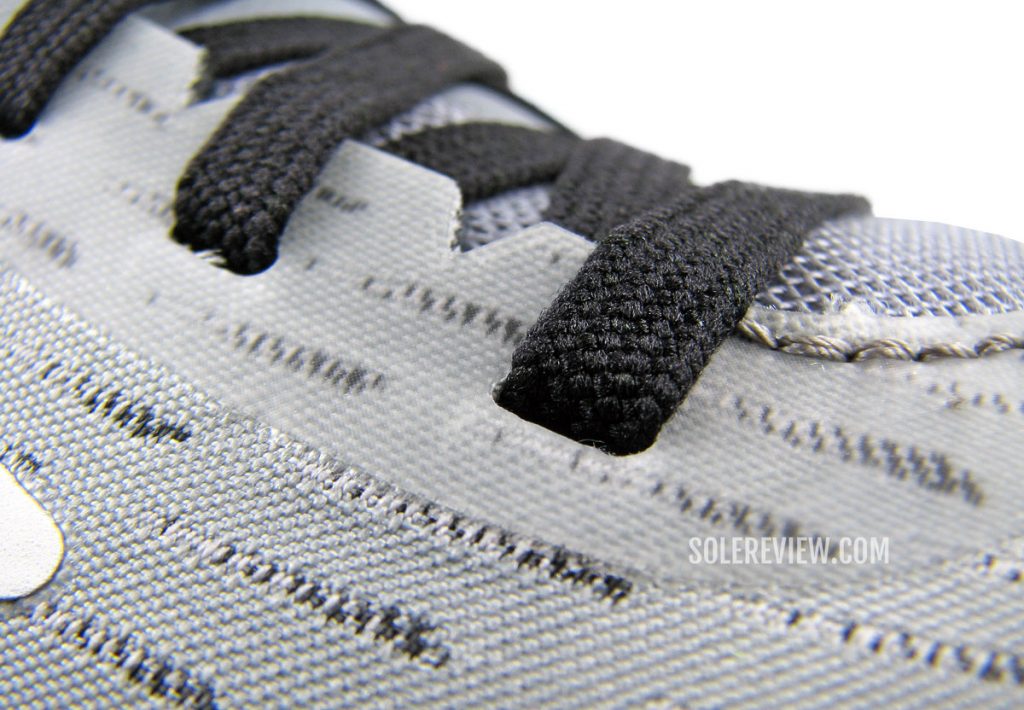
The tongue looks short, but it isn’t really. If it were any longer, it’d press against the instep. That said, the laces will not cover the entire base of the tongue when the runner’s loop is deployed.
On the bright side, the ribbon-like laces are soft and stretchy and do not create any discomfort.
Brooks also got their sleeveless tongue design right, as evident in the lack of movement.
The wide tongue flap and the soft synthetic chamois-like lining minimizes slide. The Brooks Adrenaline GTS 21 and Ghost 13 could learn a thing or two.
Though the Achilles dip is partially flared, there’s no heel slippage at all. The internal counter holds the heel in place, whereas the padded collar adds comfort to the fit experience.
Ok, maybe the tongue could feel better with a couple of millimeters added to its length. Some reflectivity would have been nice. But other than that, the Hyperion’s upper is an epitome of a well-rounded fit.
PROS AND CONS
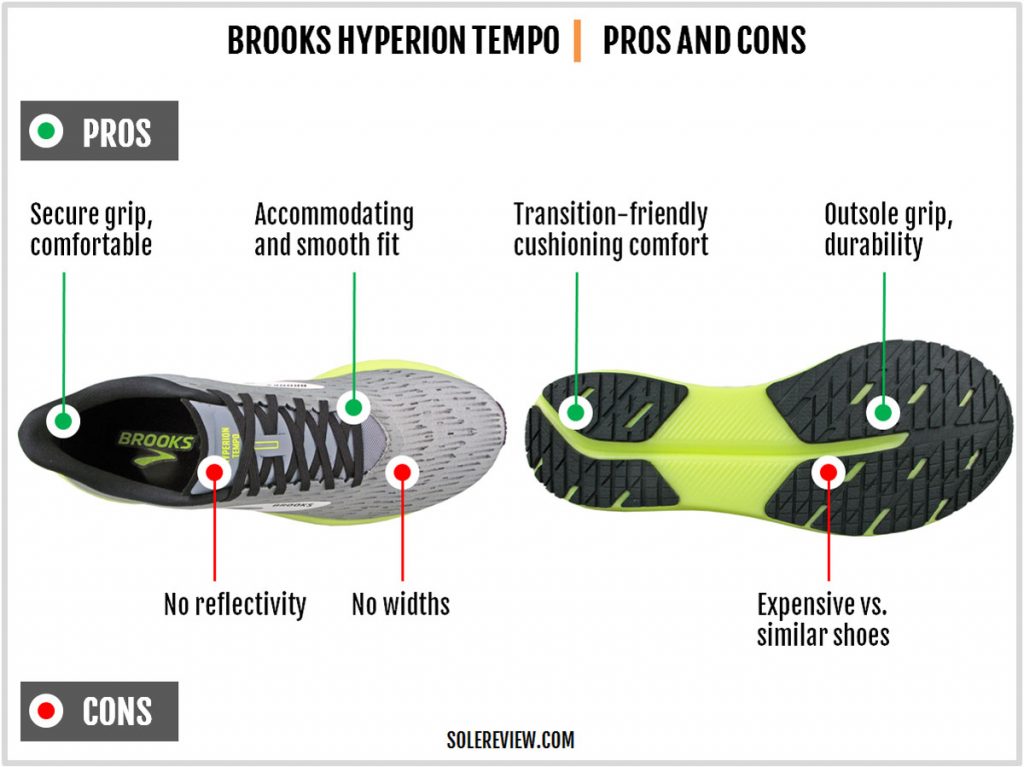
We don’t need to point out the good bits for the risk of repeating ourselves. So we’ll just focus on the “what could have been” instead.
The $150 retail price is a contentious issue, considering that models based on a similar cushioning technology (Skechers) cost less. One could argue that Brooks has a price premium, but there’s something to be said about price-value.
Some reflectivity would be nice, and so would a width or two.
SHOES SIMILAR TO THE BROOKS HYPERION TEMPO
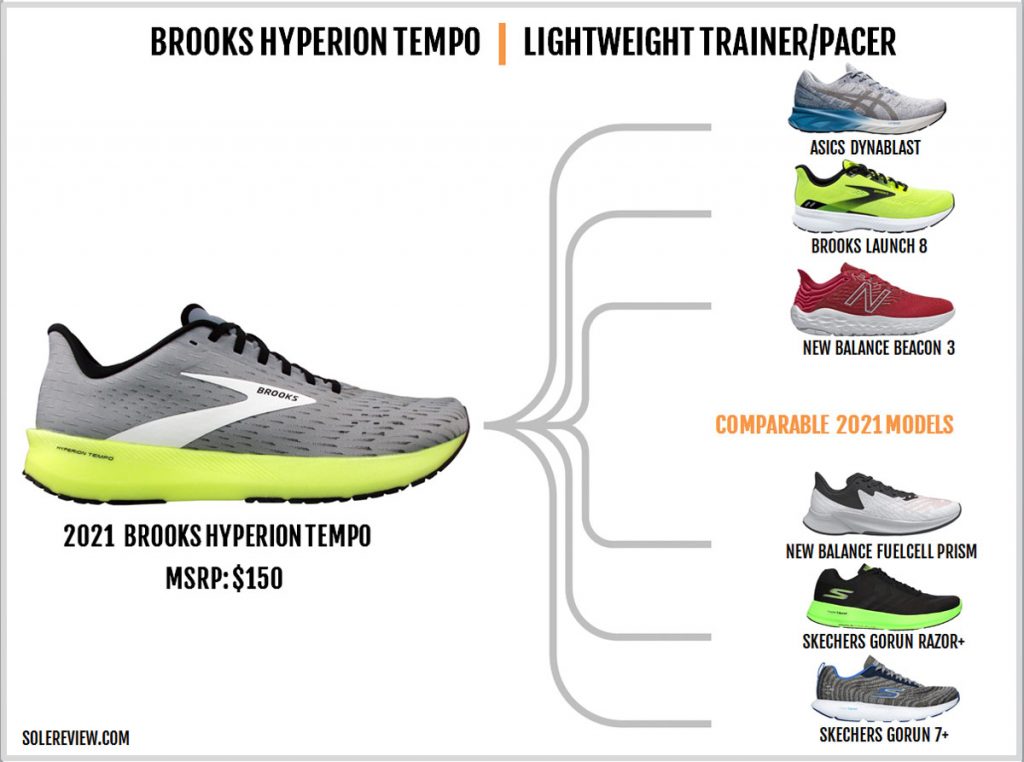
Given the unique midsole formulation, Skechers running shoes feel closest to the Hyperion in the ride department.
Both the Razor+ and GoRun 7 are extremely lightweight while being slightly softer and narrower-fitting. We assume that the upcoming Skechers Razor Excess would be (more) comparable with the Brooks shoe, but it’s not yet for sale at the time of writing this review.
The other shoes mentioned on the list aren’t similar to the Hyper-T in cushioning delivery. However, they serve a similar purpose – that of being cushioned running shoes that are capable of both pace and distance.
The much cheaper Brooks Launch 8 is an option, and so are models like the Asics Dynablast, the New Balance Beacon V3, and Fuelcell Prism. Those are worth a try if you’re not fixated on the Hyperion’s unique value proposition, but in the search of a cushioned and efficient training shoe for quicker training runs.
Do you own this shoe? Improve this review by sharing your insights – submit a review here.

